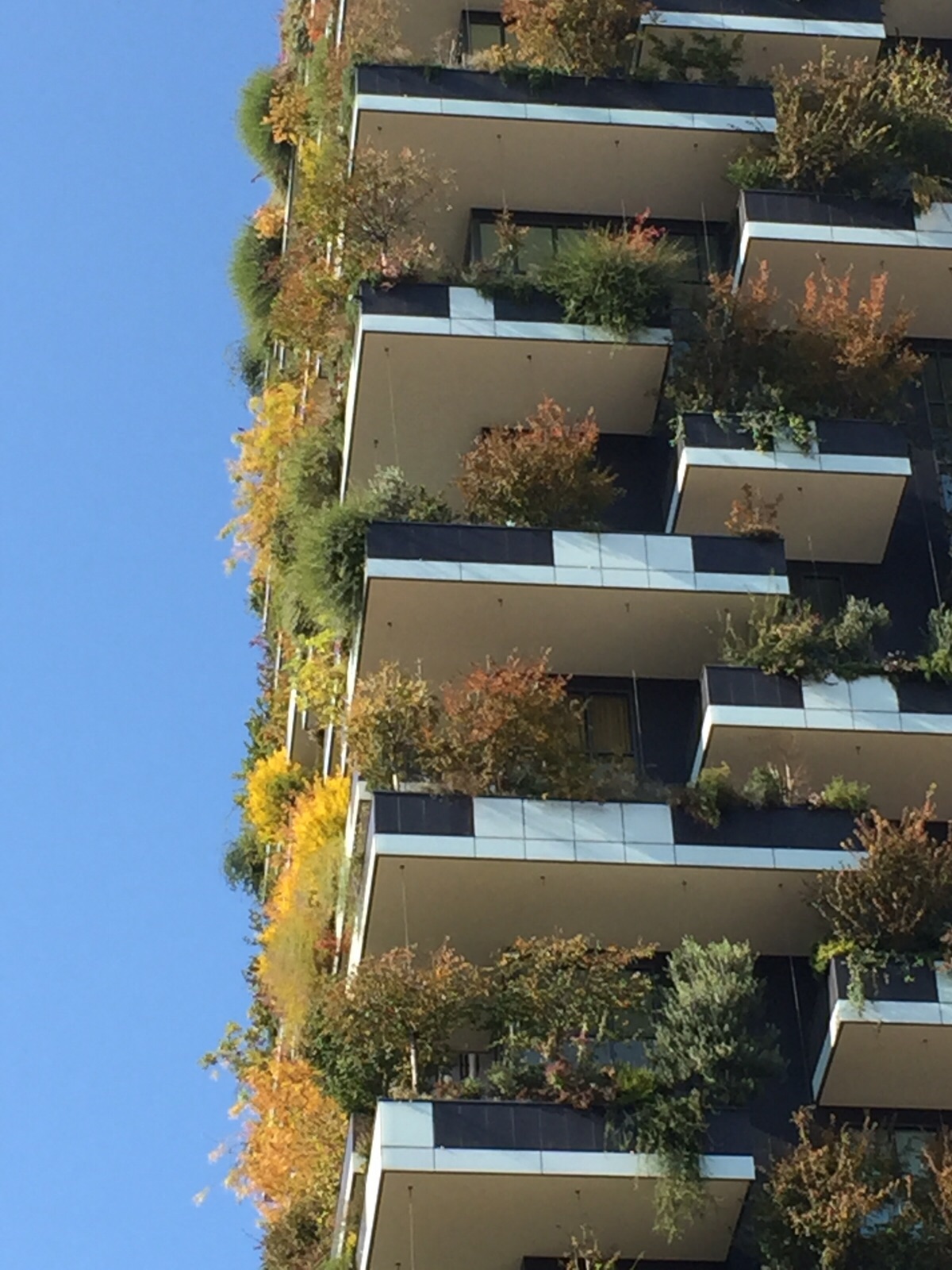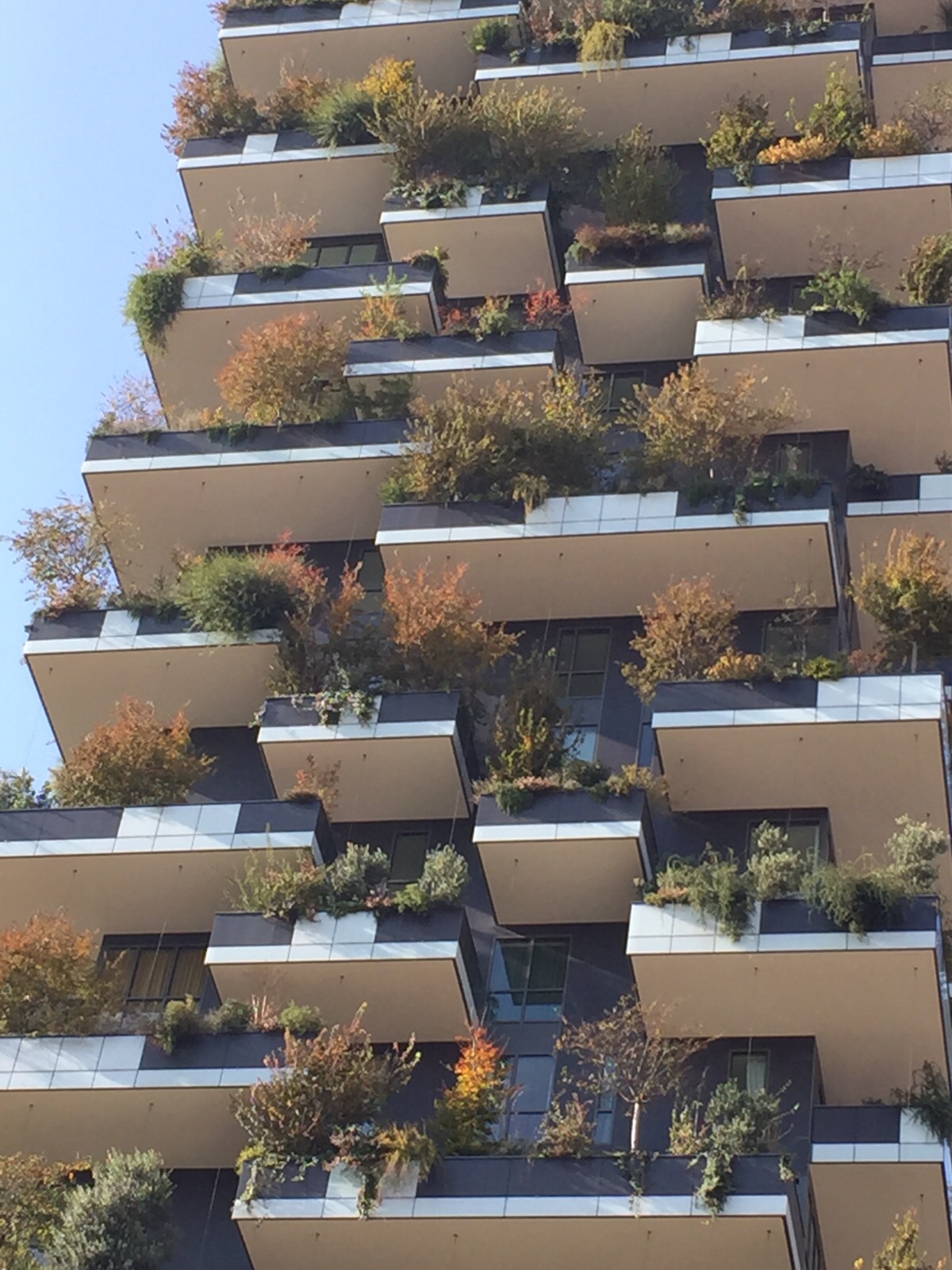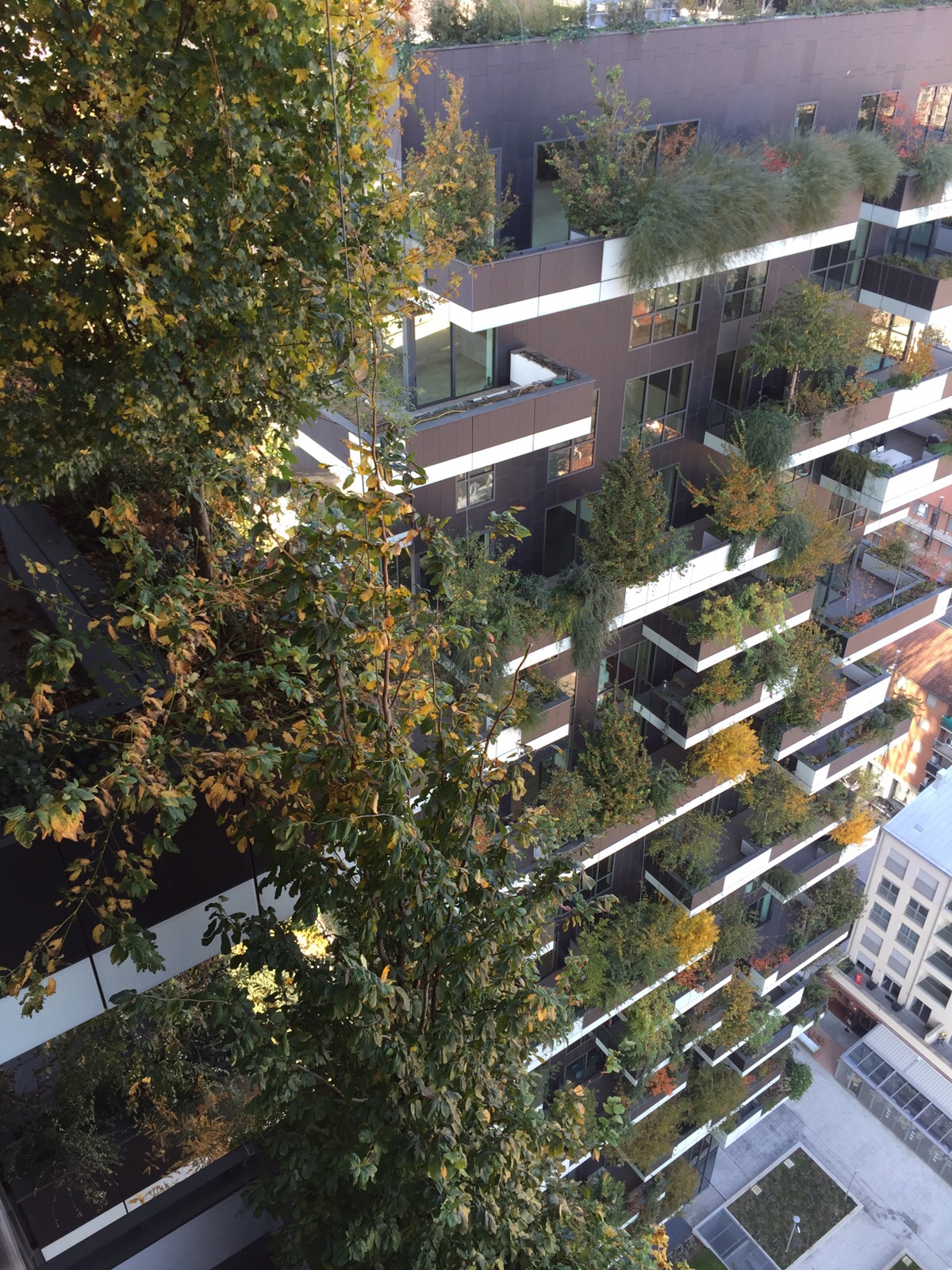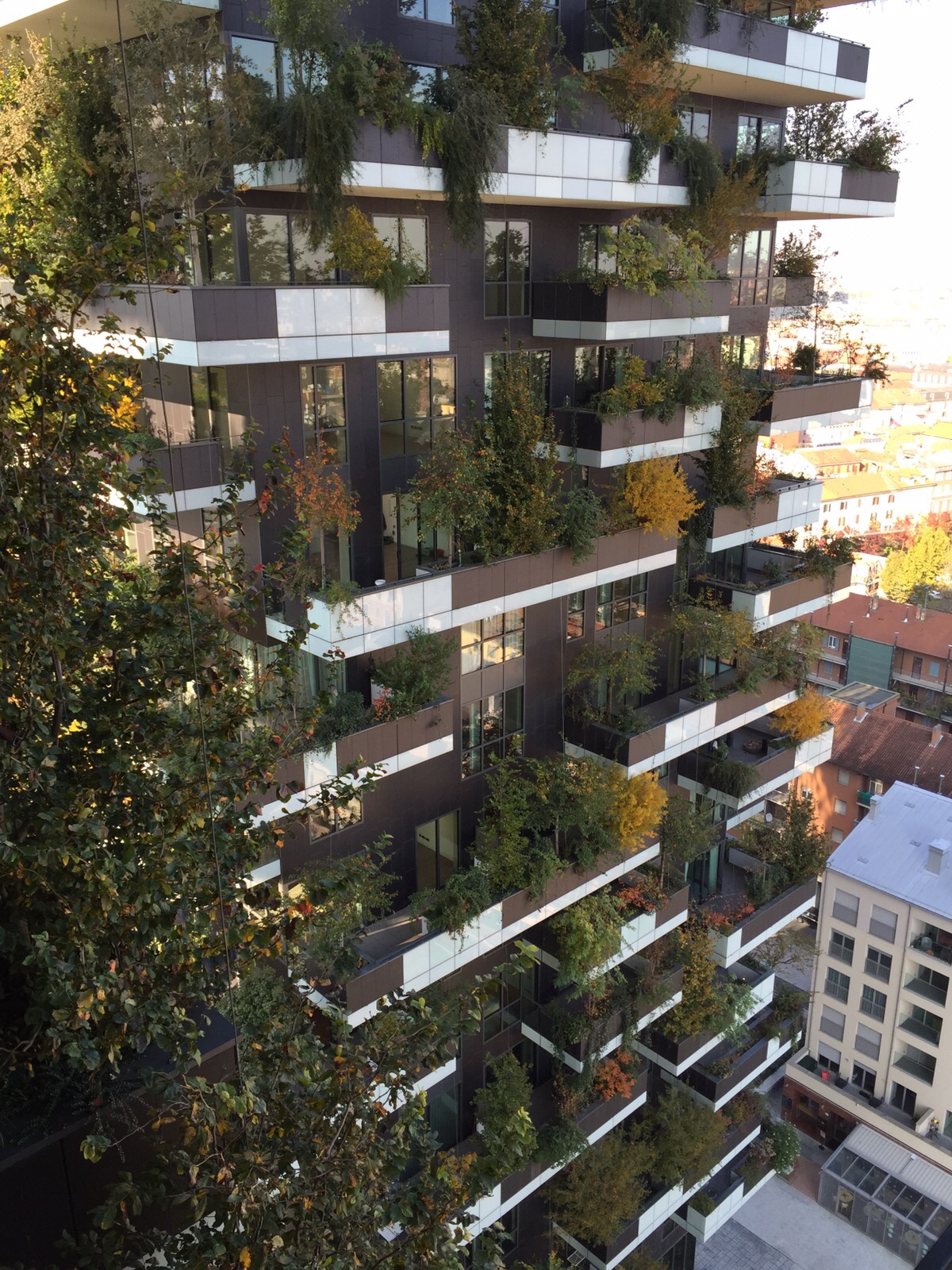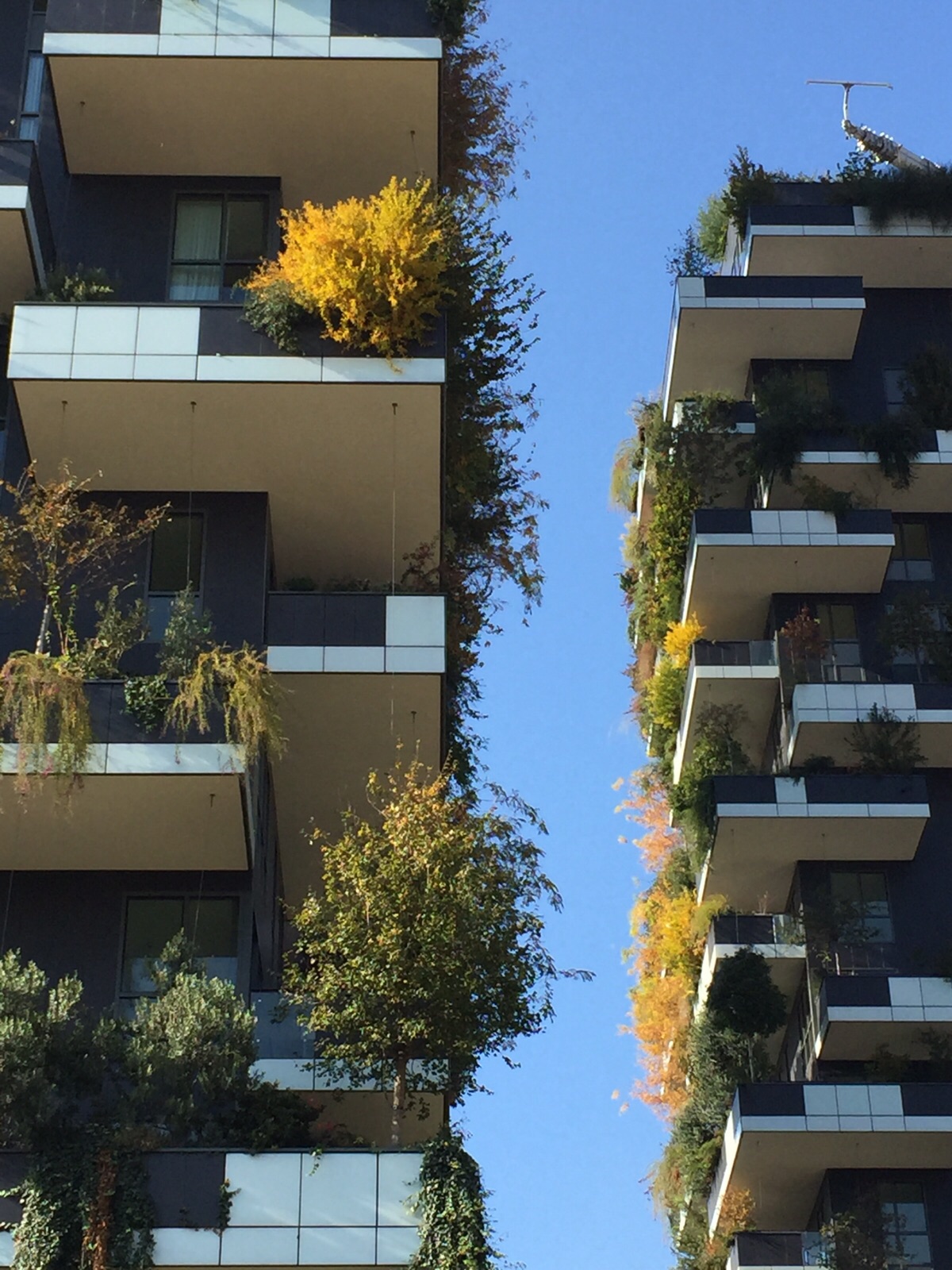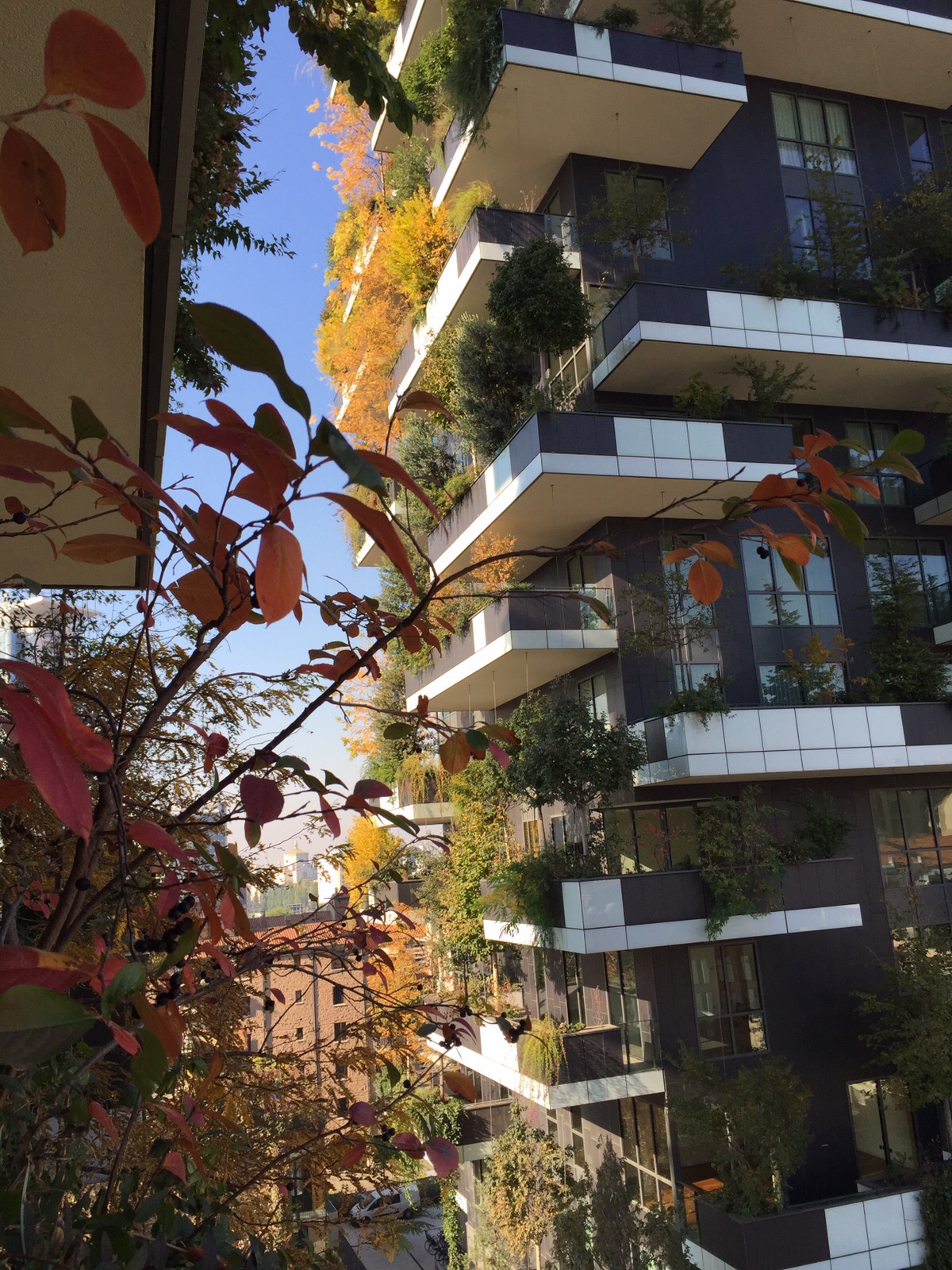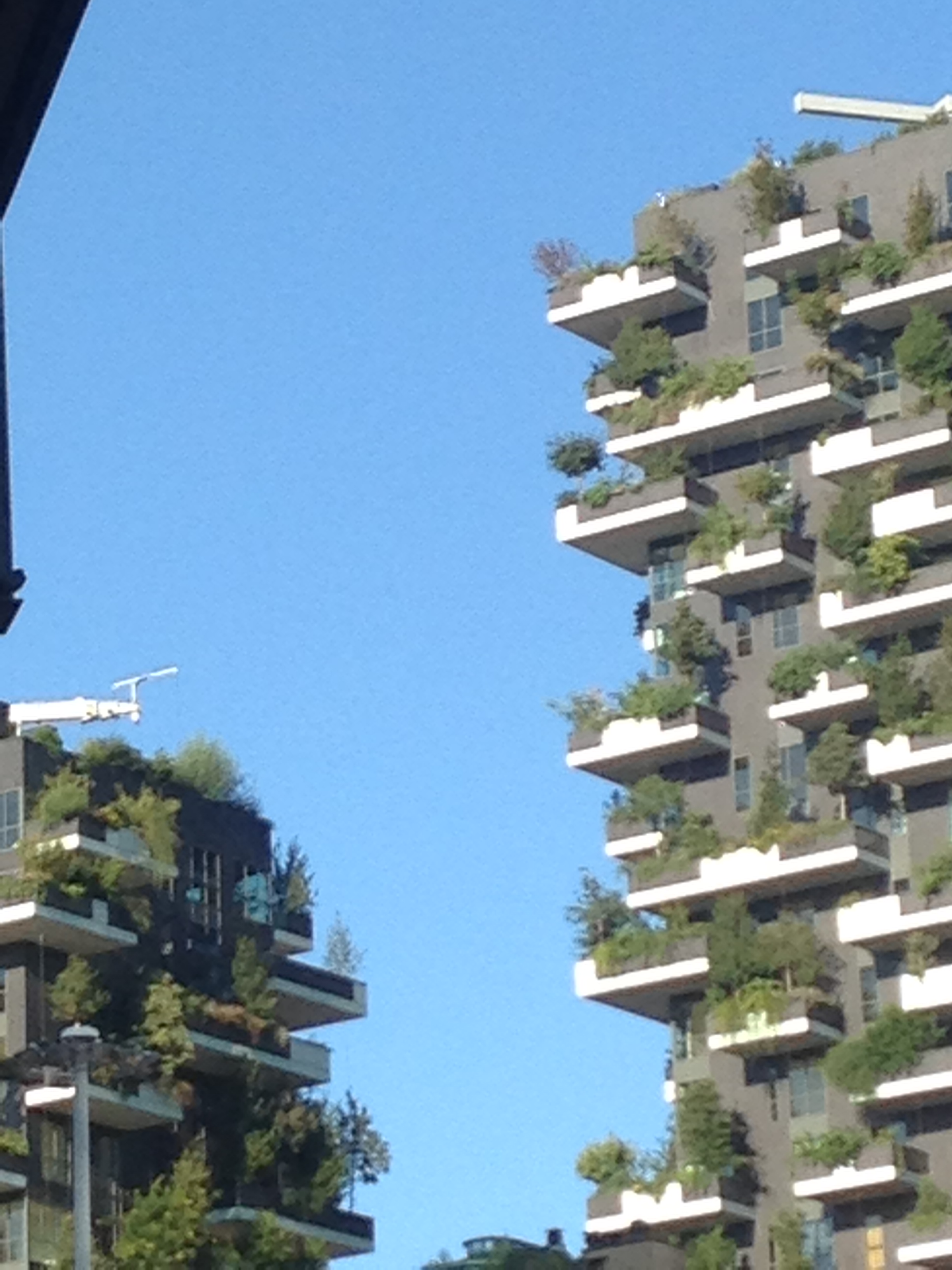
The Vertical Wood
This post is also available in:
 Italiano (Italian)
Italiano (Italian)
The vertical wood is in the Isola-Porta Nuova district of Milan. It’s actually made of two residential skyscrapers, respectively measuring 364 ft and 255 ft, with wide terraces decorated with more than 1.000 trees, small bushes, and herbaceous compositions – a total of 11.000 plants which would be otherwise found in a traditional wood of about 1.72 acres.
This most unusual wood was built between 2019 and 2014, by Studio Boeri and Landscapist/agronomist Laura Gratti assisted by Studio Emanuela Borio. The vertical wood has won two major international awards since then.
The benefits gained from this vertical forest are numberless and quite significant: the creation of a microclimate, for instance, as well as the absorption of CO2 and polluting dust, the production of humidity and oxygen, the reduction of noise pollution and some massive shelter from the wind.
A photovoltaic (a 598 square yards panel array), wind, and geothermal energy system guarantees the wood self-sufficiency; irrigation is possible mainly through a centralized filtering system for gray waters.
The management of the green areas (fertilization, pruning, anchoring checks, phytosanitary monitoring) is centralized both to guarantee high-quality services and collect useful data for closely monitoring the system over the years. Tree pruning is done once a year by a team of experienced climbers. Any phytosanitary attacks are biologically controlled.
In total, the two skyscrapers contain 130 apartments, all fitted with a terrace, but none of which are the same as the other when it comes to the vegetation.
PLANTS
Autochtonous or naturalized species were chosen to build and decorate the vertical wood. Similar ornamental species were also added, in order to further improve the overall look of this “forest in the sky”.
The plants were actually selected taking the different exposures to the sun into account, to give them the best position and to respect maximum comfort for the tenants. On the north and east facades, for instance, many deciduous trees prevail, while evergreens mainly face to south and west.
The trees were just as painstakingly selected, according to their ornamental value, adaptability to the climate, structural resistance against the wind, type of root system, and ability to keep bearing and natural appearance after pruning. They were even tested with real wind tunnels: at the Turin’s Polytechnic, then in Miami, USA, subjected to winds of 118 miles per hour.
The large and medium-sized trees, in particular, were chosen one by one in different nurseries, and then grown for two years by the Perevelli company; the latter used a ventilated substrate, to ensure the growth of self-contained roots and capillary rootlets, to guarantee the firmest ever grip.
Thanks to all these careful choices, the two towers of the Vertical Wood are blessed with numberless shades of colors throughout the year as if their plants were living in a natural forest. The same happens with their flowers and foliage.
FLOWER POTS
They consist of large concrete tanks of different sizes. The larger ones, for the bigger trees, are up to 3.3 ft deep and can contain up to 5.5 cubic meters of light soil. At the bottom, larger plants were anchored to a special net. An additional anchorage system was added, consisting of special bands connected to a steel cable inserted in the foundations of the terraces.
This post is also available in:
 Italiano (Italian)
Italiano (Italian)


